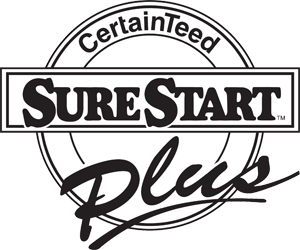Solar Roof Efficiency: Enhancing Energy Harvesting
In today’s world, the demand for sustainable energy solutions has led to a surge in interest towards renewable sources like solar power. As more individuals and businesses recognize the benefits of clean energy, the focus on optimizing solar roof efficiency has gained significant momentum. This optimization isn’t just about installing solar panels on roofs; it’s about making the most of every ray of sunlight to produce maximum energy.

Understanding Solar Roof Efficiency
Solar roof efficiency refers to the effectiveness of a photovoltaic (PV) system in converting sunlight into usable electricity. This efficiency is influenced by various interconnected components, each playing a crucial role in maximizing energy production.
The Building Blocks: Components of Efficiency
Photovoltaic Panels: These panels are the heart of a solar roof system. They contain solar cells that absorb sunlight and convert it into direct current (DC) electricity.
Inverters: Inverters are responsible for converting DC electricity from the panels into alternating current (AC), which is the type of electricity used in homes and businesses.
Mounting Systems: The way panels are mounted on a roof affects their exposure to sunlight. Proper placement ensures optimal energy capture.
Monitoring Systems: Monitoring tools provide real-time data on energy production, allowing homeowners to track their system’s performance.
Factors Impacting Efficiency
Several factors influence solar roof efficiency:
Sunlight Exposure: The amount of sunlight panels receive directly affects energy production. Maximum exposure throughout the day is ideal.
Panel Angle: The angle at which panels are installed should consider the latitude of the location. This angle affects how directly panels face the sun.
Shading: Even partial shading can significantly reduce energy output. Avoiding shading or using technologies that mitigate its impact is crucial.
Weather Conditions: Cloud cover and temperature fluctuations can affect efficiency. Modern panels are designed to work in various conditions.
Impact on Energy Output and Investment
Solar roof efficiency isn’t just a technical detail; it’s a key factor in determining the effectiveness of your solar investment. A more efficient system generates more electricity, leading to greater energy savings and potential excess energy to sell back to the grid. This translates to a shorter payback period and increased financial returns.

Choosing the Right Photovoltaic Panels: Quality Matters
Exploring Panel Varieties
In the world of solar roof efficiency, the type of photovoltaic (PV) panels you choose makes a significant difference. A wide range of panels is available in the market, each with its own strengths and characteristics.
Prioritizing Quality for Optimal Efficiency
When it comes to solar roof efficiency, quality is paramount. Opt for high-quality panels equipped with advanced technologies. Investing in such panels ensures not only higher efficiency but also better long-term performance and durability.
Comparing Panel Types for Efficiency
Monocrystalline Panels: These panels are known for their high efficiency due to their uniform black appearance. They excel in converting sunlight into electricity, making them a popular choice for maximizing solar roof efficiency.
Polycrystalline Panels: Recognizable by their blue hue, these panels are slightly less efficient than monocrystalline ones but are often more affordable. They strike a balance between cost and efficiency.
Thin-Film Panels: These panels are lightweight and flexible, making them suitable for unconventional roof shapes. However, their efficiency is generally lower than crystalline panels.
Durability and Longevity
Quality panels not only enhance efficiency but also ensure your solar investment lasts. High-quality panels are designed to withstand various weather conditions and offer better warranties, giving you peace of mind for years to come.

Optimizing Panel Placement and Angle for Maximum Output
Capturing Sunlight: The Key to Efficiency
In the realm of solar roof efficiency, where you place your panels matters immensely. Proper panel placement is like positioning a solar sail to catch every ray of sunlight throughout the day, ensuring a consistent stream of energy production.
Embracing Solar Tracking Systems
Solar tracking systems are a game-changer in the pursuit of optimal efficiency. These smart technologies allow panels to follow the sun’s movement across the sky, adjusting their angles dynamically. This means panels are always oriented towards the most direct sunlight, leading to increased energy capture.
Harnessing Local Geography for Advantage
Local geographical factors play a pivotal role in determining the ideal orientation and tilt of solar panels. For instance, homes in the Northern Hemisphere benefit from south-facing panels, while those in the Southern Hemisphere should have north-facing panels. The panel angle also varies based on latitude, ensuring maximum exposure to the sun’s rays.

Mitigating Shading and Obstructions
Shading’s Impact on Solar Roof Efficiency
Shading, even if partial, casts a significant shadow on solar roof efficiency. When parts of your photovoltaic (PV) panels are shaded, their ability to generate electricity diminishes. Addressing shading is crucial to ensure consistent energy production.
Identifying Shading Sources
Trees, nearby buildings, and chimneys are common culprits that cast shadows on solar panels. To mitigate shading effects, start by identifying potential sources during different times of the day. This awareness will help you plan your panel placement more effectively.
Microinverters and Power Optimizers: Shading’s Nemesis
Enter microinverters and power optimizers—innovative solutions that combat shading’s adverse effects. Unlike traditional string inverters that connect multiple panels, these technologies work at the panel level. When a panel is shaded, only that specific panel’s output is affected, not the entire array.

The Role of Inverters in Solar Efficiency
Inverters: Bridging the Energy Gap
In the world of solar roof efficiency, inverters are the unsung heroes that bridge the gap between the direct current (DC) electricity generated by photovoltaic (PV) panels and the alternating current (AC) power that powers our homes and businesses. They play a pivotal role in transforming the raw solar energy into a usable form.
Understanding Inverter Options
Three primary types of inverters are commonly used in solar setups:
String Inverters: These inverters connect multiple panels in series, converting the collective DC output into AC power. While cost-effective, they are susceptible to shading issues and the overall performance of the string.
Microinverters: Every panel gets its own microinverter, allowing each panel to operate independently. This minimizes shading-related losses and maximizes overall efficiency.
Power Optimizers: These devices work in conjunction with string inverters, ensuring that the panels operate at their maximum potential even in partially shaded conditions.
Choosing the Right Inverter for Your Setup
Selecting the appropriate inverter technology depends on various factors, including your solar roof’s configuration, shading potential, and budget. Microinverters and power optimizers are particularly effective in systems with shading concerns, ensuring that the efficiency of individual panels is not compromised.

Maintenance and Monitoring for Sustained Efficiency
Safeguarding Efficiency Through Maintenance
Maintaining solar roof efficiency isn’t just a one-time task—it’s an ongoing commitment. Regular maintenance ensures that your photovoltaic (PV) panels continue to operate at their peak efficiency, delivering the optimal energy output you desire.
Ensuring Clean Panels for Maximum Output
Dirt, dust, and debris can accumulate on solar panels over time, blocking sunlight and reducing efficiency. Periodic cleaning using a gentle detergent and a soft brush can help restore panels to their full capacity. A clean surface allows panels to absorb sunlight without hindrance, translating to higher energy production.
Routine Inspection and Troubleshooting
Regular visual inspections are essential in spotting any potential issues early. Look for signs of damage, loose connections, or weather-related wear and tear. Addressing these concerns promptly prevents further deterioration and ensures your solar roof remains efficient.
Powerful Insights Through Monitoring
Monitoring systems take solar roof efficiency to the next level. These technologies track energy production in real-time, offering valuable insights into your system’s performance. They can even provide early alerts in case of malfunctions, allowing you to take swift action.
View More Articles
Please Share!











